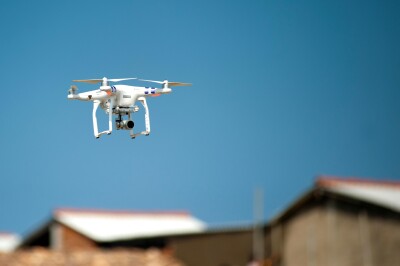One of the great advantages of writing about emerging technologies is the fact that we get to know the leaders of the future years before their names become known to the general public. In the case of non-traditional aviation, such as unmanned aerial vehicles (UAVs) and advanced air mobility (AAM), some of these future leaders are also aviators, pilots and visionaries who identified early on that the future of aviation lies with these innovations.
The clearest example of leadership in non-traditional aviation, while having a solid background in manned aviation is Jon Damush, CEO of Iris Automation whose meteoric rise to the top of the influencer pyramid is fueled by a passion for aviation in all its forms. Jon is not only an avid pilot, but he is also a certified flying instructor (CFI), a qualification that denotes a deep knowledge of all aspects of flying.
Recently, Jon and I sat down to discuss 2021 in retrospective and tinker with the possibilities for the future of aviation and the drone industry.
The first issue that came into the conversation was the comment by Federal Aviation Administrator (FAA) Stephen Dickson during Commercial UAV Expo in September about the viability of an initial BVLOS (beyond visual line of sight) recommendation by the aviation rulemaking committee (ARC) by Thanksgiving.
BVLOS flights are one of the key factors in opening the flood gates for a massive deployment of unmanned aircraft in controlled and uncontrolled airspace, and it is being followed closely by all industry stakeholders. In this regard, Jon is optimistic about the future.
“Well, as you know I’m part of the ARC, and we are nearing final consensus for a formal recommendation to the FAA,” Jon said. “While the report is a tremendous achievement, I think the ARC’s value is bigger than just the report. The fact that diverse viewpoints are at the table and are forced to talk is fantastic. This specific ARC is tasked with a complex issue and the ramifications are many, such as adding thousands of non-traditional aircraft to the national airspace, while maintaining the highest level of safety for the flying public. All I can say is that a good dialogue is happening and we’re making incredible progress.”
The conversation then turned to certification of new non-traditional aircraft and the role that this aspect of aviation plays in the future of unmanned aircraft.
“I believe the future belongs to platform-based companies, but the challenge will be the recovering of the initial investment while introducing a new transportation model,” Jon elaborated. “Joby Aviation is a good example of a business model with great potential, but the real transformational approach will be the offering of an intermodal service that would deliver the passenger from the urban location to the end destination in a seamless way. For example, if you are traveling to the airport, you will be screened for security at the AAM location and delivered directly at the terminal, without having to go through security again. This will justify the premium pricing and would help popularize the service.”
This conversation about the expensive certification process inevitably led to the definition of a business model for startups in the AAM/UAV space.
“In such a fast-moving industry, you need to be flexible,” explained Jon. “You might start with an idea and the realities of the market will mold your company to end up with a completely different idea. In the case of Iris Automation, we started with a specific focus on detect and avoid (DAA) but quickly realized that we could deliver additional capabilities that relieve pilot workload and eventually allow for the removal of the pilot from the cockpit entirely. DAA is just one task a pilot does. Pilots also aviate, navigate, and communicate while managing nominal and off-nominal events. I’m a staunch believer that the innovations happening in aviation today, driven by drones and AAM, will have a transformative effect on aviation as a whole and that’s tremendously exciting!”
Here at Commercial UAV News, we hope that Jon’s enthusiasm and leadership will continue guiding the industry toward commercial deployment and a future where manned and unmanned aerial platforms share a safe sky, reduce emissions, and improve processes that today endanger lives and create unnecessary expenses. The future of our industry is bright, and we look forward to another year of innovation and good news.















Comments